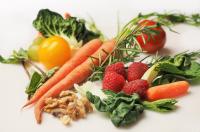Categories
Tags
-
#wedding
#car
#health
#sex
#hair loss treatment
#dental implants
#teeth whitening
#Windows
#Business
#Wedding Photographer
# health
#Neck Pain
#Diabetes
#gum disease
#Fibromyalgia
#vehicle
#stroke
#Back Pain
#migraineheadaches
#Pain
#pregnancy
#Travel Blog
#insomnia
#acné
#dentist teeth whitening
#Cars
#Dental Health
#Woman's health
#bathroom
#TOOTH DECAY
##health #healthcare
#2021 travel
#Chronic Hives
#garlic health benefits
#Buying a Used Vehicle
#Pink Eye
#Hemorrhoids
#sex life
#Heart Doctor
#Foot health
#Scoliosis
#podiatrist
#Hip Pain
#wedding day
#night sweats
##business
#Biofeedback Therapy
#Cancer
#wrinkles
#Joints
#dental cleaning
#Toothache
#Gynecological Conditions
#osteoarthritis
#heath matters
#Gut Issues
##back pain
#Chronic Fatigue
#Fine Lines. Health
#heartburn
#dental emergencies
#Oral Hygiene
##design
#Business Management
#Health Benefits
#Menstrual Migraines
#Kids Dental Problems
#Herniated Disc
#breast cancer
#Sciatica Pain Specialist
#Sciatica
#Enamel Wear
#Sexually transmitted infections
#STIs
#Lower Back Pain
#Bad Car
#Foot Issues
#painless dentistry
#Dental Problems
#Dental Hygiene
#Vitamin A
#Kidney Doctor
#Arrhythmia
#HOA
#HOA accounting
#Health Risks
#Upper Back Pain
#Fight Pain
#Abdominal Pain
#Mole Removal
#Blood Clots
#Knee Pain
#Abnormal Vaginal Discharge
#Audited
#Cupping Therapy
#Vein Disease
#Cryosurgery
#Headaches
#Middle Back Pain
#PCOS
#Cervical Disc Replacement Surgery
#wedding photography
#Kids Oral Hygiene
#Dental Issues
#Oral Issues
#Dental health. Health
#Addiction Treatments
#Venous Insufficiency
Archives
Recent Videos
Let's talk!
5 Foods to Eat to Reduce the Risk of Scoliosis Progression
-

According to the American Association of Neurological Surgeons, scoliosis affects 2 to 3 percent of the population or an estimated six to nine million people in the United States. Scoliosis is a condition in which the spine is curved sideways. Either to the left or the right side. The most common causes for scoliosis include birth defects, neurological abnormalities, and genetic conditions.
The symptoms of scoliosis can differ depending on the stage of the condition. However, common symptoms include back pain, uneven hips, a rotating spine, one shoulder blade that’s higher than the other, trouble breathing due to a reduced area in the chest for lungs to expand, and one shoulder blade that sticks out more than the other.
Regardless of the root cause of your scoliosis, you can slow down its progression by eating a healthy diet. Since inflammation can make scoliosis worse, it’s essential to cut down on pro-inflammatory foods. Plus, scoliosis patients often lack essential nutrients that can also speed up the progression of the disease. Consider talking to your doctor about supplements for regaining lost nutrients.
If you need spinal deformity surgery, following these tips will help you recover faster and improve your spine health.
1. Foods containing calcium and vitamin D
Calcium is essential for everyone, particularly for people with spine deformities. It helps maintain bone health and supports joints. Vitamin D is also essential, as it helps your body absorb calcium. Sesame, poppy, celery, and chia seeds are good sources of both vitamin D and calcium.
2. Fruits and veggies
Fruits and vegetables are good at supporting any condition, and scoliosis is not an exception. They are full of nutrients that are essential for the overall health and maintenance of the bones’ joints. They are also high in fiber that improves digestion and nutrient absorption. Plus, following a diet high in fresh fruits and veggies can lower your risk of developing chronic diseases.
Consider adding broccoli, apples, avocado, cauliflower, carrots, Brussels sprouts, oranges, and pears. Opt for fresh options instead of frozen.
3. Foods rich in vitamin E
Vitamin E is a powerful antioxidant that can help your body protect its cells from free-radical damage. This micronutrient is naturally found in many foods. Vitamin E is also available as a dietary supplement.
Since scoliosis is a degenerative condition, free radicals can speed up its progression and if they’re found in excess in the body, this can lead to a wide range of health issues as well as speed up the progression of scoliosis.
Vitamin E might help people with higher environmental risk factors. The levels of oxidative stress (excess free rascals), cigarette smoking, exposure to air pollution, and high exposure to ultraviolet rays from sunlight
4. Non-processed meat
Meats such as chicken, turkey, beef, and fish possess the necessary proteins that your body needs to survive and make new tissues. Try avoiding oily or fried meats, which are those you would get at a fast-food restaurant. You also need to steer clear of packaged lunch meats and pork, which contain preservatives and other unhealthy add ons.
5. Water
Though water is not food, it’s necessary for every living organism. Good hydration keeps all the body’s systems in top working order, and it aids in all of the body’s natural processes.
Water can also be a great substitute for soda, coffee, alcoholic beverages, and other unhealthy drinks. It is suggested to increase your water intake by keeping a bottle or glass of it near you at all times. It quenches thirst better than soda, and it can even stave off hunger pangs that might otherwise lead you to eat unhealthy snacks.


